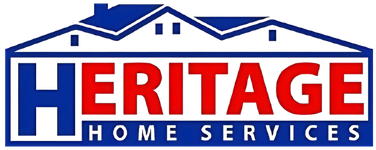Revolutionize Your Home with Our Siding Solutions
Transform Your Home’s Exterior with Diverse Siding Options
Installing Siding is an often overlooked home improvement that can dramatically change your home’s appearance. Gone are the days when homeowners had limited choices in siding materials. Today, the market abounds with a wide variety of options, offering something for every aesthetic preference and budget. At Heritage Home Services, we specialize in providing high-quality siding solutions, including the popular and affordable Fiber Cement and Clad Siding. These materials come in several styles and colors, allowing for superior strength, durability, and an enhanced look that protects and adds value to your home for years to come.

Fiber Cement Siding: A High-Performance Alternative
For homeowners seeking the ultimate in siding performance, Fiber Cement Siding stands out as the finest option. Known for its beautiful alternative to wood, Fiber Cement Siding dramatically enhances your home’s aesthetic while offering the durability and low maintenance your property deserves. With advantages such as termite resistance, fireproofing, superior warranties, and insurance discounts, it’s a choice that offers peace of mind and significant benefits over traditional materials. Its wood-like appearance without the hassle and its environmentally friendly composition make Fiber Cement Siding a truly revolutionary product.
Understanding Fiber Cement Siding Production: The composition of Fiber Cement Siding includes sand, cement, and cellulose fibers, which undergo autoclaving with pressurized steam to strengthen the end product. This process not only improves the material’s durability but also prevents cracking. Designs imprinted on the siding before baking result in a hardened, attractive finish that mimics the look of wood but with increased longevity and less maintenance. Fiber Cement Siding provides a modern, durable solution for those looking to upgrade their home’s exterior.
Choosing the Right Siding for Your Home
At Heritage Home Services, we understand the importance of choosing the right siding for your home. Whether you prefer the low maintenance and affordability of the unmatched durability and aesthetic appeal of Fiber Cement Siding, we are here to guide you through the selection process. Our team of experienced professionals is dedicated to ensuring your complete satisfaction, offering expert advice and superior installation services tailored to your specific needs. Let us help you transform your home’s exterior with siding solutions designed to last for years to come.
